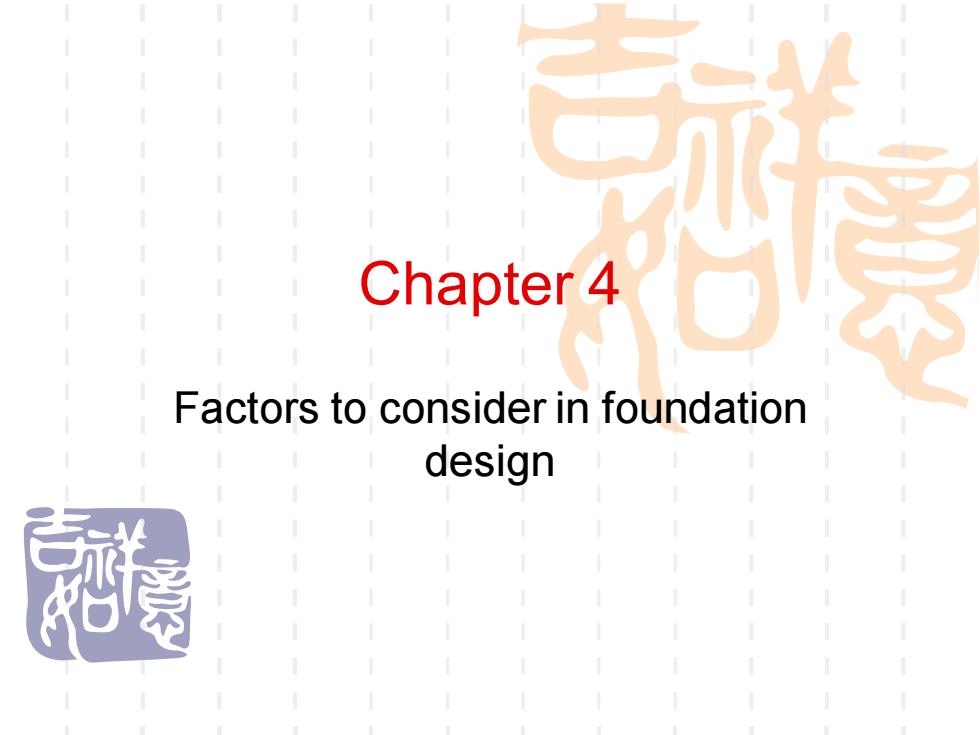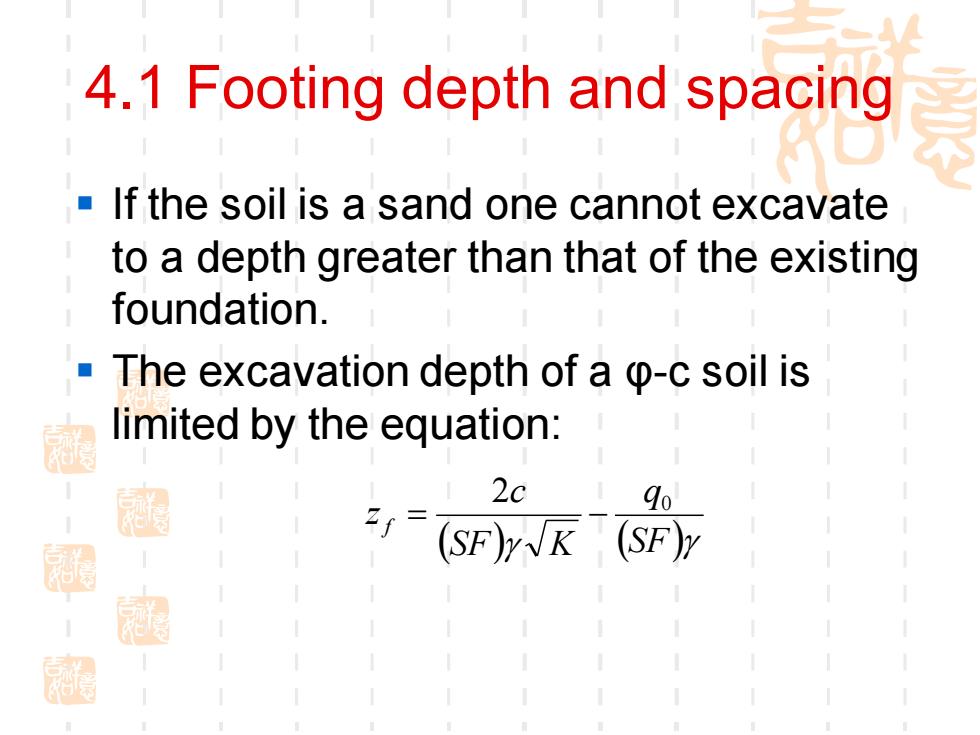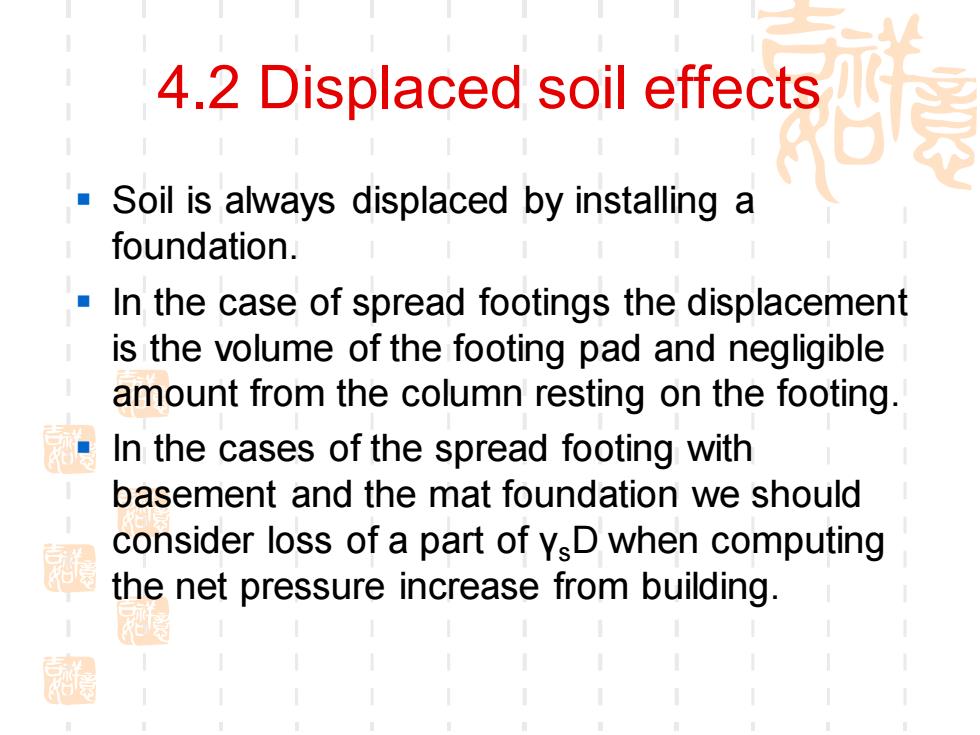
Chapter 4 Factors to consider in foundation design
Chapter 4 Factors to consider in foundation design

4.1 Footing depth and spacing Footing should be carried below: The frost line -Zones of high volume change due to moisture fluctuation Topsoil or organic material ■Peat and muck Unconsolidated material 园 超
4.1 Footing depth and spacing ▪ Footing should be carried below: ▪ The frost line ▪ Zones of high volume change due to moisture fluctuation ▪ Topsoil or organic material ▪ Peat and muck ▪ Unconsolidated material

4.1 Footing depth and spacing When footings are to be placed adjacent to an existing structure,the line from the base of the new footing to the bottom edge of the existing footing should be 45 or less with the horizontal plane. From this requirement it follows that the distance m should be greater than the difference in elevation of the two footings,Z. If the new footing is lower than the exiting footing,there is a possibility that the soil may flow laterally from beneath the existing footing. This may increase the amount of excavation somewhat but,more importantly,may result in settlement cracks in the existing building
4.1 Footing depth and spacing ▪ When footings are to be placed adjacent to an existing structure, the line from the base of the new footing to the bottom edge of the existing footing should be 45°or less with the horizontal plane. ▪ From this requirement it follows that the distance m should be greater than the difference in elevation of the two footings, zf . ▪ If the new footing is lower than the exiting footing, there is a possibility that the soil may flow laterally from beneath the existing footing. ▪ This may increase the amount of excavation somewhat but, more importantly, may result in settlement cracks in the existing building

4.1 Footing depth and spacing If the soil is a sand one cannot excavate to a depth greater than that of the existing foundation. The excavation depth of a o-c soil is limited by the equation: 2c 9o 2 (SF)yK (SF)Y
4.1 Footing depth and spacing ▪ If the soil is a sand one cannot excavate to a depth greater than that of the existing foundation. ▪ The excavation depth of a φ-c soil is limited by the equation: ( ) (SF) q SF K c zf 2 0 = −

4.2 Displaced soil effects Soil is always displaced by installing a foundation. In the case of spread footings the displacement is the volume of the footing pad and negligible amount from the column resting on the footing. In the cases of the spread footing with basement and the mat foundation we should consider loss of a part of ysD when computing the net pressure increase from building
4.2 Displaced soil effects ▪ Soil is always displaced by installing a foundation. ▪ In the case of spread footings the displacement is the volume of the footing pad and negligible amount from the column resting on the footing. ▪ In the cases of the spread footing with basement and the mat foundation we should consider loss of a part of γsD when computing the net pressure increase from building